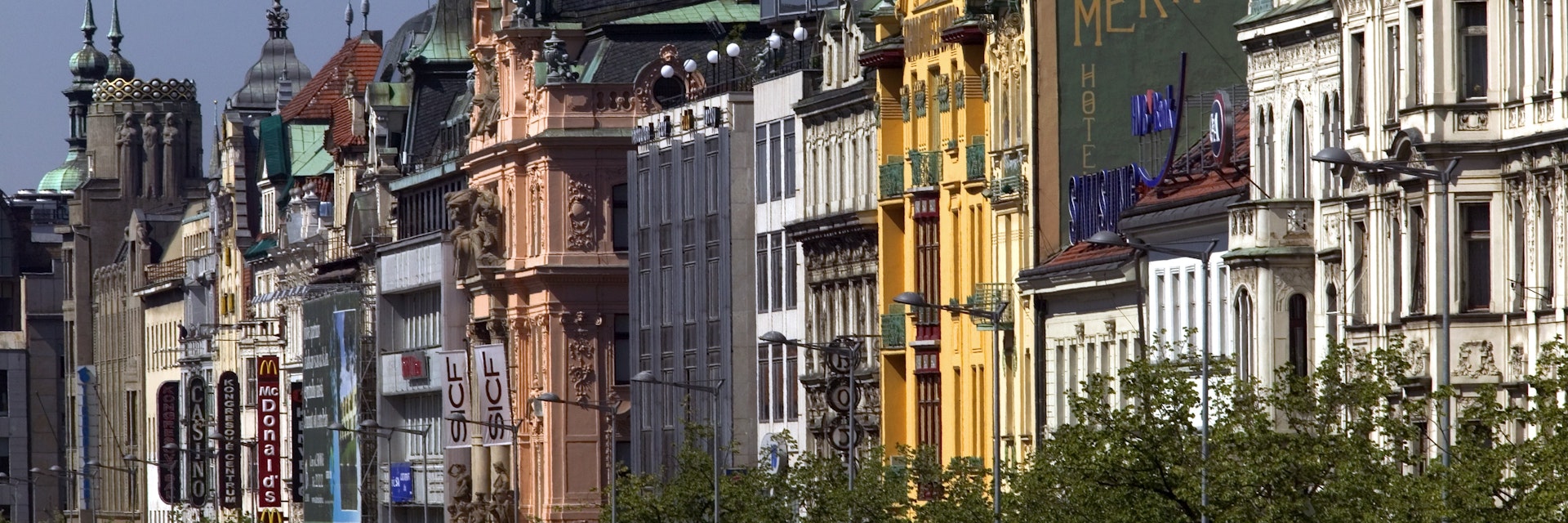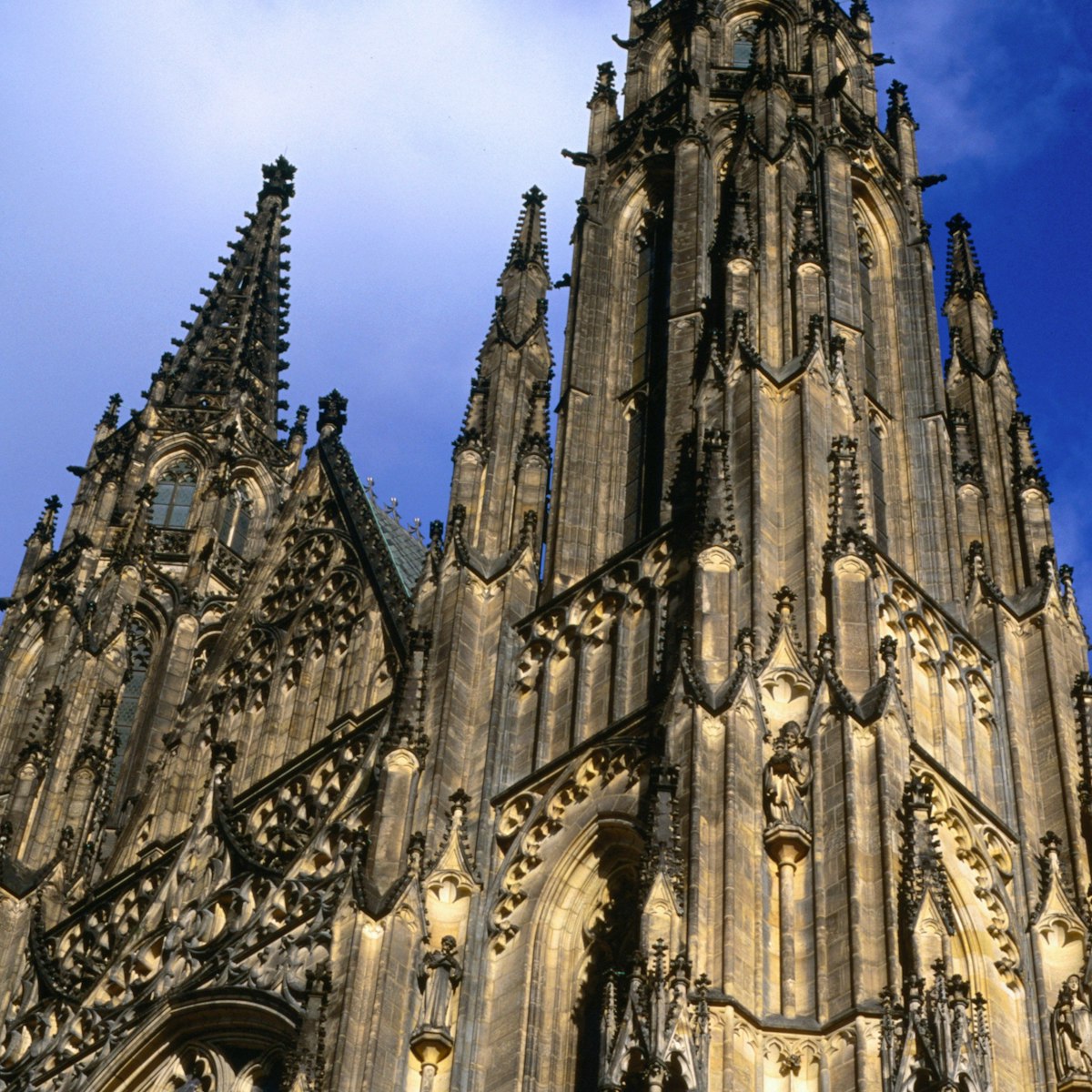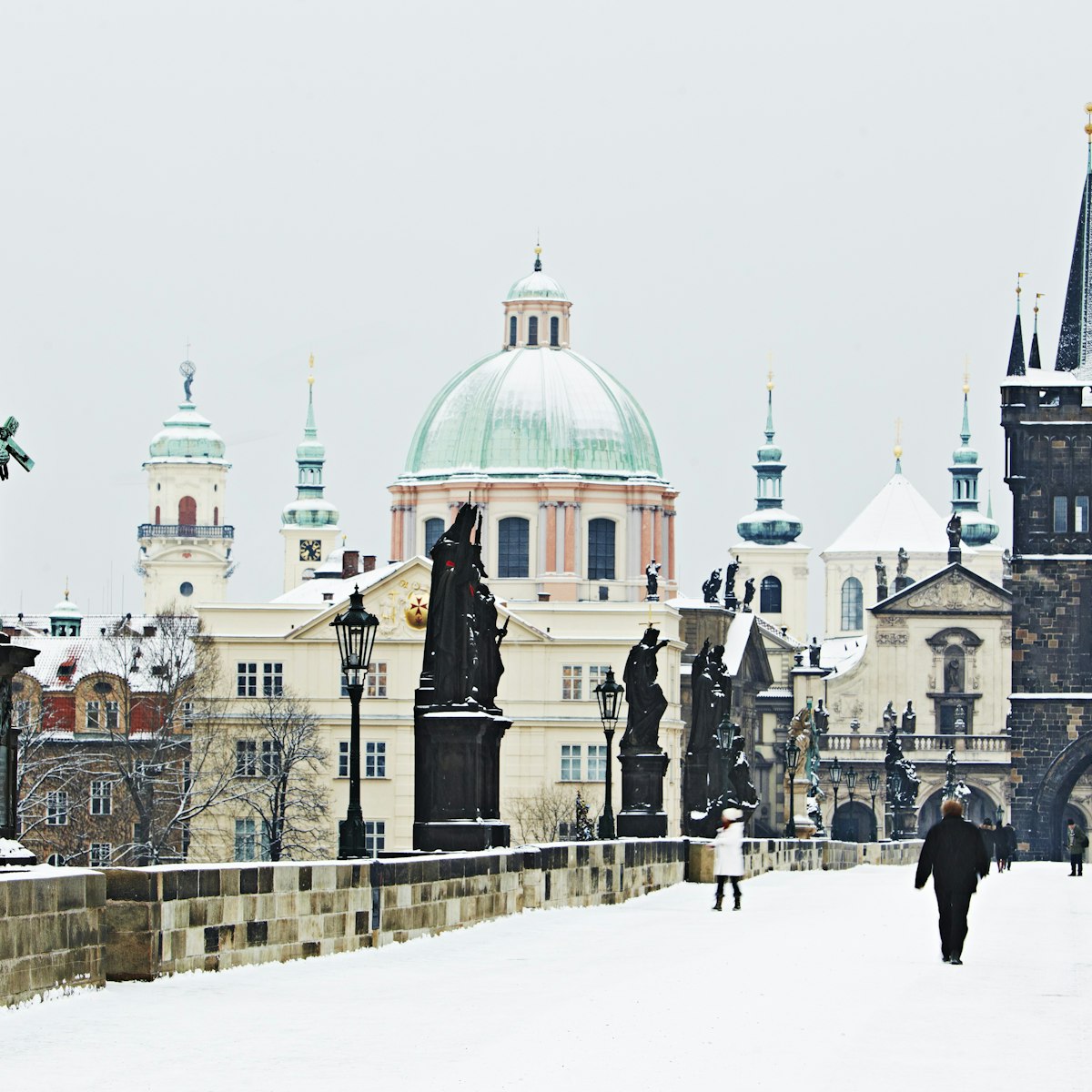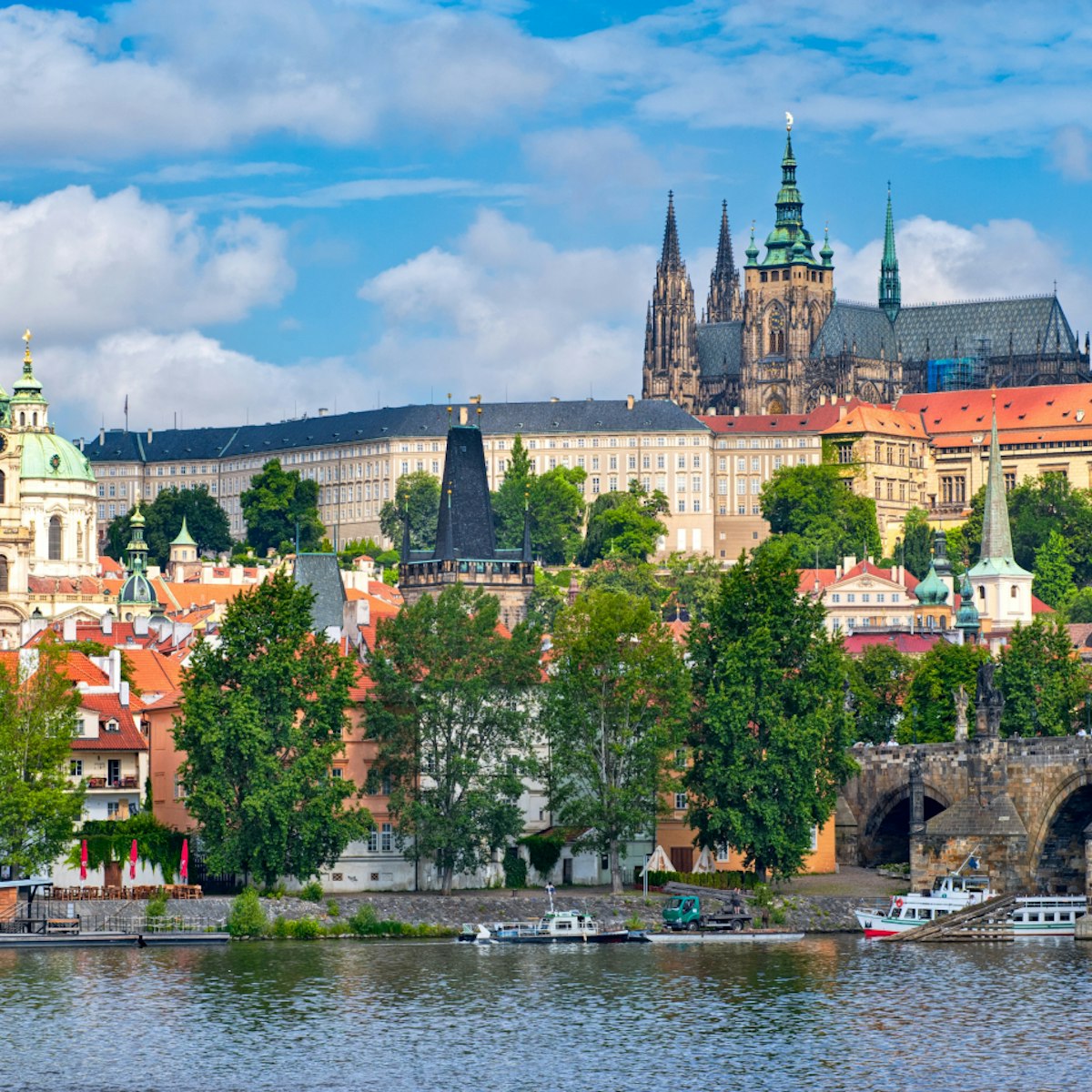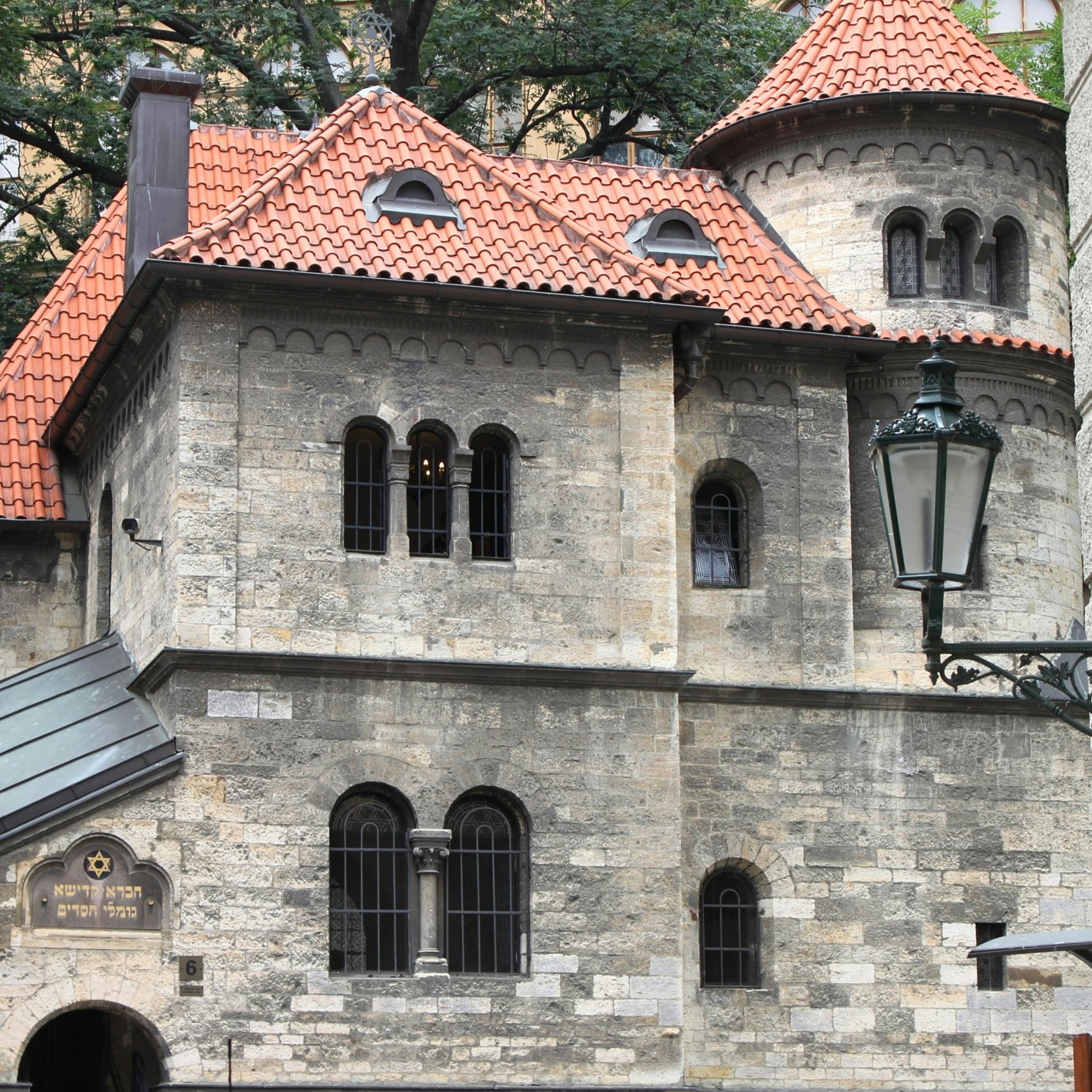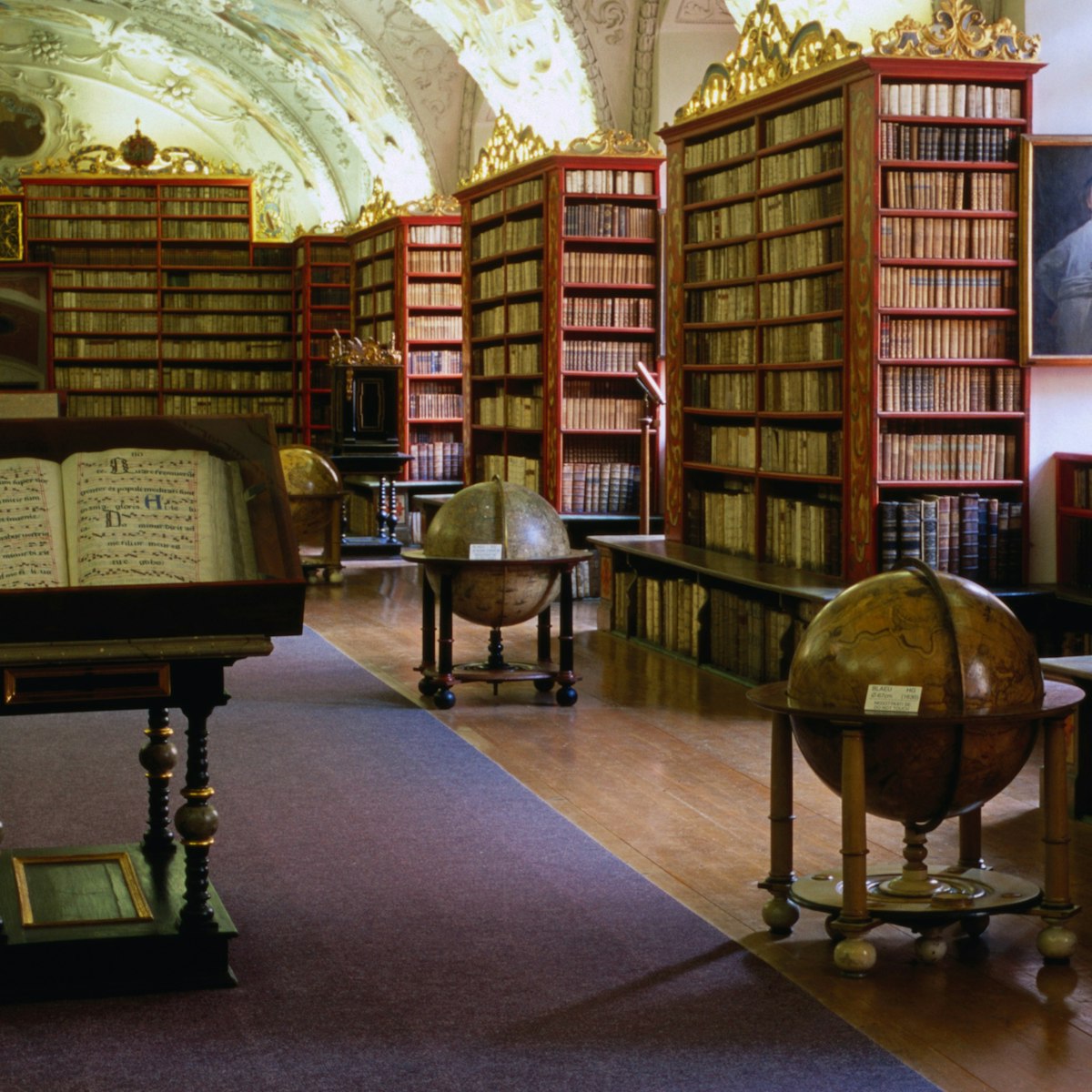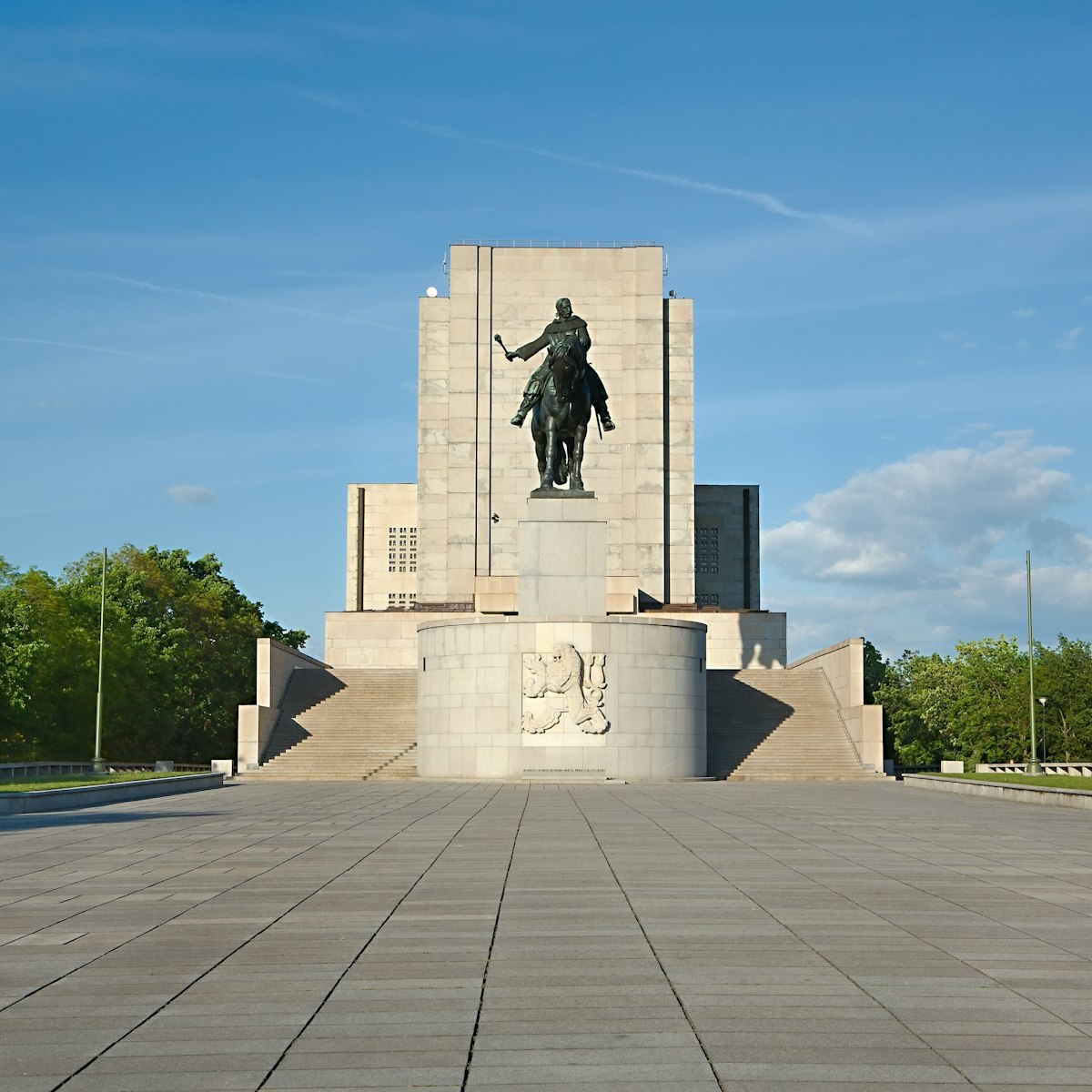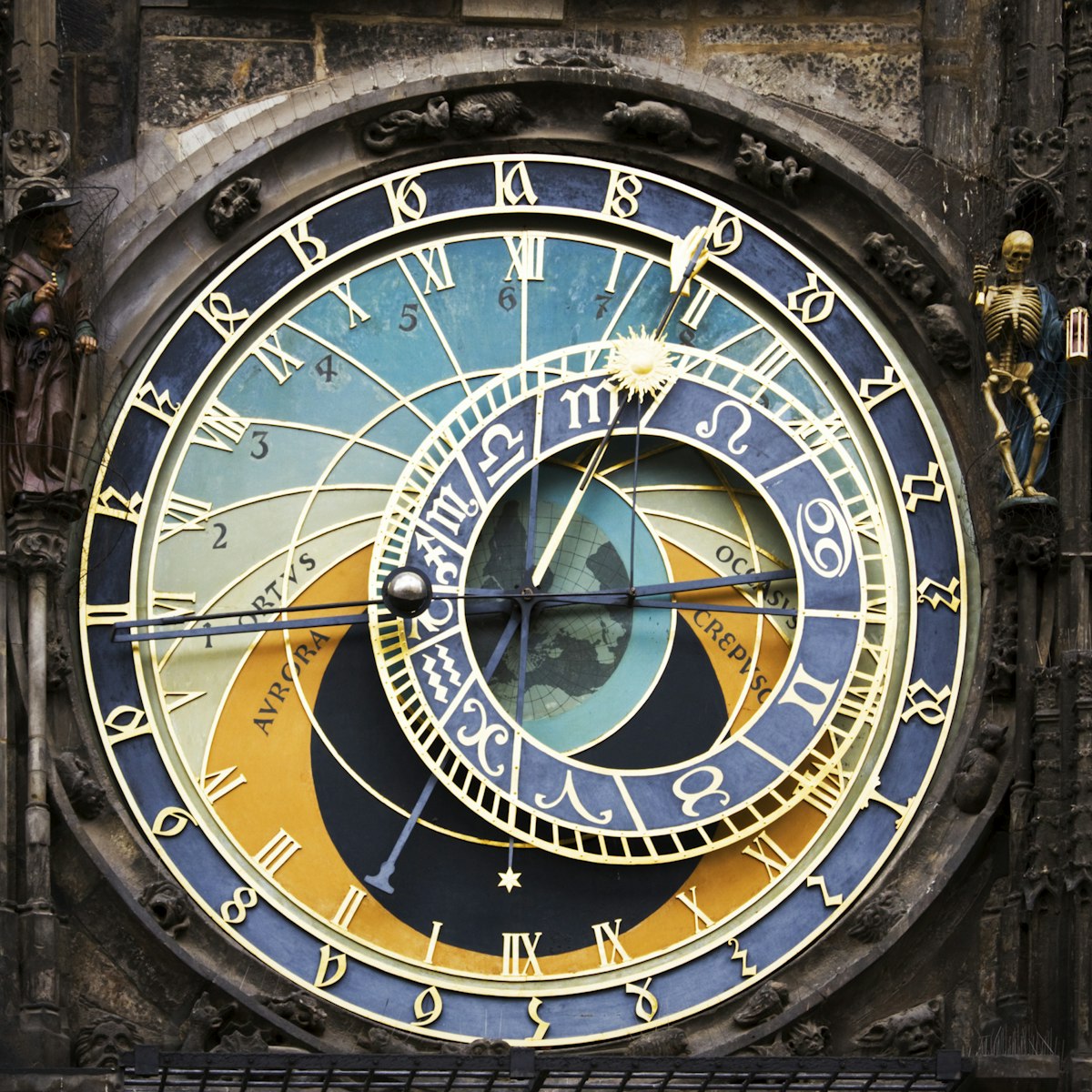More a broad boulevard than a typical European city square, Wenceslas Square has witnessed a great deal of Czech history – a giant Mass was held here during the revolutionary upheavals of 1848; in 1918 the creation of the new Czechoslovak Republic was celebrated here; and it was here in 1989 that many anticommunist protests took place. Originally a medieval horse market, the square was named after Bohemia's patron saint during the nationalist revival of the mid-19th century.
At the (upper) southern end of the square is Josef Myslbek’s muscular equestrian statue of St Wenceslas, the 10th-century pacifist Duke of Bohemia and the ‘Good King Wenceslas’ of Christmas carol fame. Flanked by other patron saints of Bohemia – Prokop, Adalbert, Agnes and Ludmila – he has been plastered with posters and bunting at every one of the square’s historical moments. Today it is the most frequented meeting place for locals as the statue stands at one of the entrances to Muzeum metro station.
Near the statue, a small memorial to the victims of communism bears photographs and handwritten epitaphs to anticommunist rebels Jan Palach and Jan Zajíc. In contrast to the solemnity of this shrine, the square around it has become a monument to capitalism, a gaudy gallery of fast-food outlets and expensive shops.
Following a police attack on a student demonstration on 17 November 1989, angry citizens gathered in Wenceslas Square by the thousands night after night. A week later, in a stunning mirror image of Klement Gottwald’s 1948 proclamation of communist rule in Old Town Square, Alexander Dubček and Václav Havel stepped onto the balcony of the Melantrich Building to a thunderous and tearful ovation, and proclaimed the end of communism in Czechoslovakia.
More recently this has been the scene of mass protests against incumbent oligarch prime minister, Andrej Babiš.
